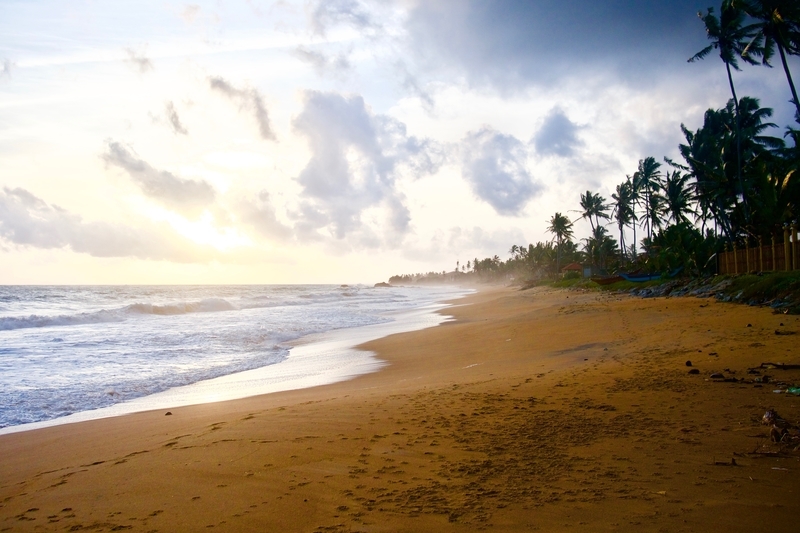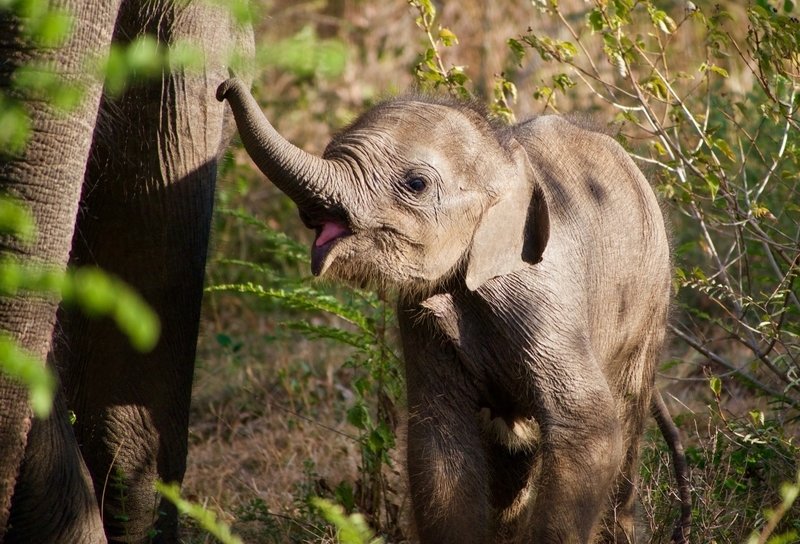
Udawalawe Elephant Safari in Sri Lanka
There’s something so raw and primal about going on safari. About traveling down a dusty roads and coming face to face with animals in the wild.
It’s a thrilling sensation that never abates, no matter how many safari parks I visit.
Prior to traveling to Sri Lanka, I knew of the country’s architectural gems, its idyllic countryside, and its pristine beaches. But—until I was deep in the planning process—I didn’t know that its wildlife-spotting opportunities were some of the best on Earth.
Among its most renowned safari destinations is Udawalawe National Park—a biodiversity hotspot that among the world’s best places to see Asian elephants in the wild.
UDAWALAWE NATIONAL PARK, SRI LANKA
For such a small island, Sri Lanka boasts a remarkable number of wildlife refuges that are worthy of including in a travel itinerary. The tear-shaped island has been designated a biodiversity hotspot, along with the Western Ghats in India. It is home to a diverse array of animals—from elephants to sloth bears and from leopards to exotic birds.
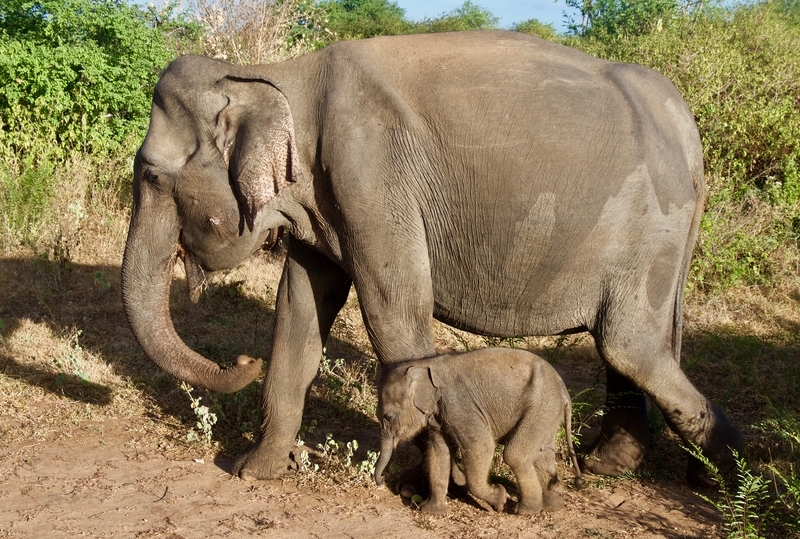
Udawalawe National Park lies in southern Sri Lanka, about 3.5 hours southeast of Colombo and two hours from both Ella and Galle. It is one of the most wildlife-rich places to visit in Sri Lanka, along with Yala National Park and Minneriya.
Designated as a national park in 1972, Udawalawe provides a safe refuge for Sri Lanka’s wild elephants.
Elephants are Udawalawe’s key attraction. More than 600 live within the park’s boundaries, often congregating in herds of fifty or more.
WILDLIFE IN UDAWALAWE
Sri Lanka has its very own Big 5 that differs from the Big 5 that you’ll encounter in Africa. These include the leopard, the Asian elephant, the sloth bear, the blue whale, and the sperm whale.
If you’re lucky, you’ll have the opportunity to see the three land mammals in Udawalawe (though sloth bears and leopards are rare treats). You’re all but guaranteed to see elephants.
In addition to Sri Lanka’s Big 5, Udawalawe National Park is home to sambar, chital, water buffaloes, crocodiles, wild boars and Toque Macaques—reddish brown monkeys endemic to Sri Lanka.
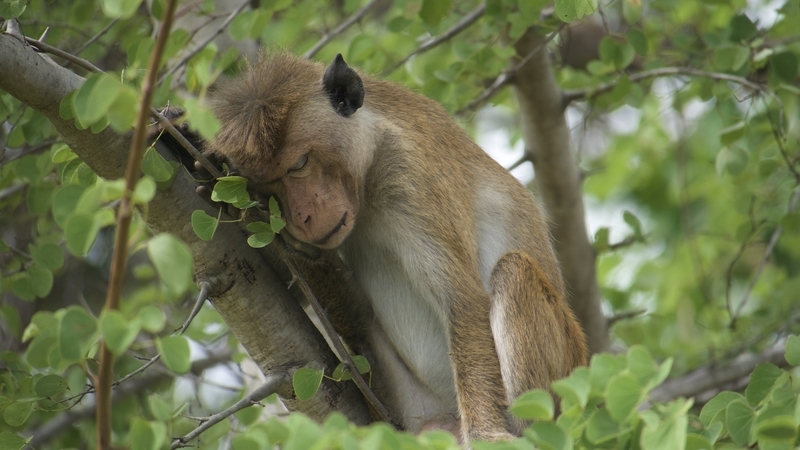
There are upwards of 180 resident bird species in Udawalawe, in addition to many others that pass through on their migratory routes. Notable species endemic to the area include the Sri Lanka Spurfowl, Sri Lanka Junglefowl, the Malabar pied hornbill and the Brown-capped Babbler.
UDAWALAWE SAFARI TOURS
Tours of Udawalawe National Park consist of Jeep safaris. You cannot drive your own vehicle in the park.
Jeep safaris are bookable both online or from many of the guesthouses in the area. The morning after our arrival in the area, we spent the better part of the day exploring Udawalawe’s nooks and crannies on a private safari tour.
We did not book our tour in advance and had no issue finding a tour that fit our budget and schedule.
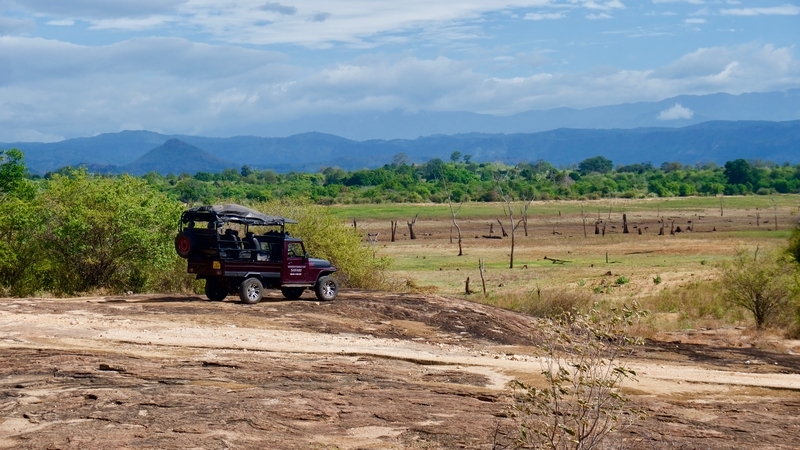
If you prefer to book tours online in advance, you’ll find plenty of options. I found tours of Udawalawe online for as low as $27—a true steal considering the quality and quantity of wildlife in the park.
Most tours of Udawalawe National Park consist of a morning or late afternoon game drive.
If you’re feeling particularly ambitious, you can even book a private tour that allows you the opportunity to visit Udawalawe and Yala in the same day.
OUR UDAWALAWE SAFARI EXPERIENCE
We started our Udawalawe journey in the park’s scrublands that are popular with elephants, as the large mammals are most active at dawn.
Over the course of the morning, our safari in Udawalawe National Park brought us face to face with elephants of all shapes and sizes.
Our day-long Udawalawe safari covered most of the land within the park’s boundaries. It brought us deep into the thicket of elephant-speckled forest, past lakes infested with crocodiles and through marshy plains dotted with deer and herds of buffalo.
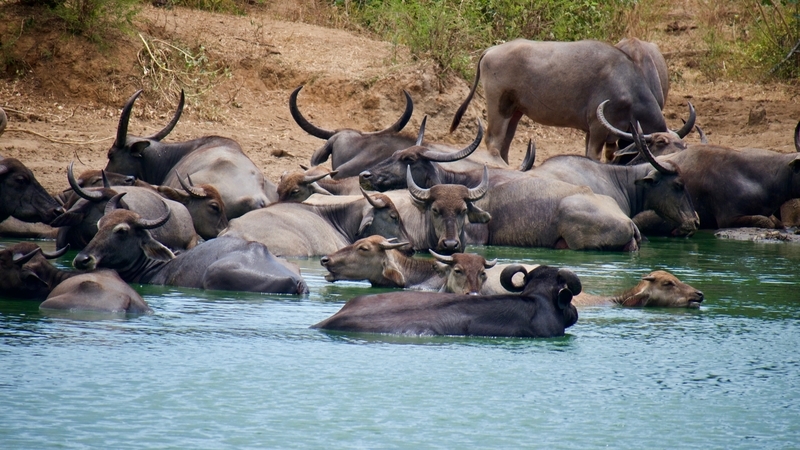
In the afternoon, while most of the large animals were enjoying their siestas in the shade, we took the opportunity to visit the lakes and wetlands of the national park in search of birds.
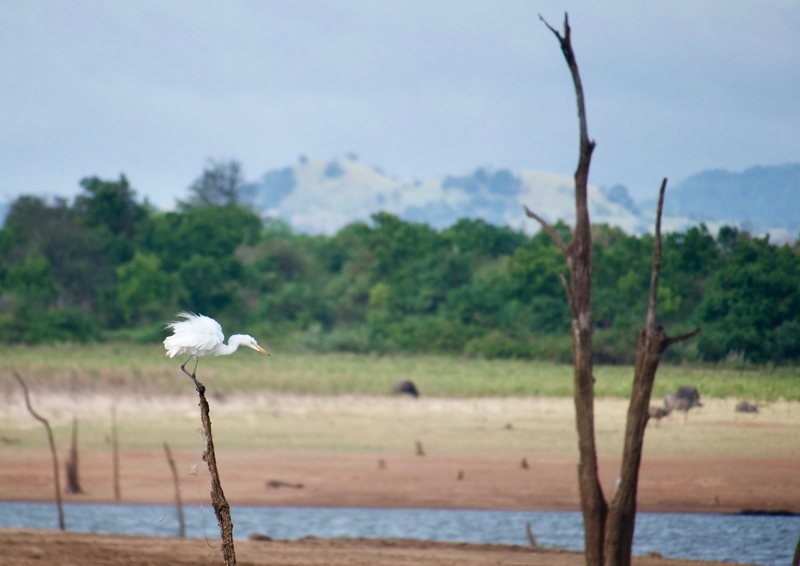
Udawalawe National Park contains two shallow lakes that are magnets for the park’s flocks of waterfowl. The area around the lakes is home to large herds of water buffalo and spotted deer. Like the treeless flatlands of the Etosha Pan, the vast expanses in Udawalawe afforded us the opportunity to witness the interaction of numerous species at once–buffalo soaking in the shallow waters, crocodiles lounging lazily on the muddy banks and hawks circling overhead.
The scenery and wildlife is a testament to both Sri Lanka’s varied landscapes and its unparalleled biodiversity.
UDAWALAWE ELEPHANT TRANSIT HOME
Udawalawe safaris offer unparalleled opportunities for animal-spotting. The park contains an Elephant Transit Home that gives tourists the opportunity to have an ethical elephant encounter.
Supported by the Born Free Foundation, the transit home aims to rehabilitate orphaned elephants. The elephants are then released back into their natural habitat once they are deemed ready.
The Elephant Transit Home is open to tourists. Due to lack of time, I did not visit the center during my trip to Sri Lanka. I’d already visited an elephant rescue center in Thailand and wanted to prioritize the safari experience.
WHERE TO STAY NEAR UDAWALAWE
My friend and I stayed at the no-frills yet lovely Morningside Guesthouse in Udawalawe. The accommodation has since permanently closed, though there are plenty of similar budget-friendly places to stay—including the Hasthi Safari Cottage and La Casa Safari Resort.
If you’re looking for an even cheaper option that is suitable for backpacking Sri Lanka on a budget, the Best Safari Homestay has rooms at a wallet-friendly price point.
For a step up in luxury and amenities, the Jungle Paradise Resort and Mango Tree House receive excellent reviews.
***
Flanked by a crescent of purple-tinged mountains, Udawalawe is both scenically stunning and teeming with wildlife.
During every moment of our six hour Udawalawe safari, I felt the same thrills I’d felt the first time I set out on a safari. I reveled in the sounds of nature, relished the feelings of solitude, and marveled at my raw and unspoiled surroundings.
And for the entirety of my safari tour in Udawalawe National Park, I was transported back to the time I spent in Africa–nearly forgetting that I was over 7,000 miles away on a small, tropical island in the middle of the Indian Ocean.
